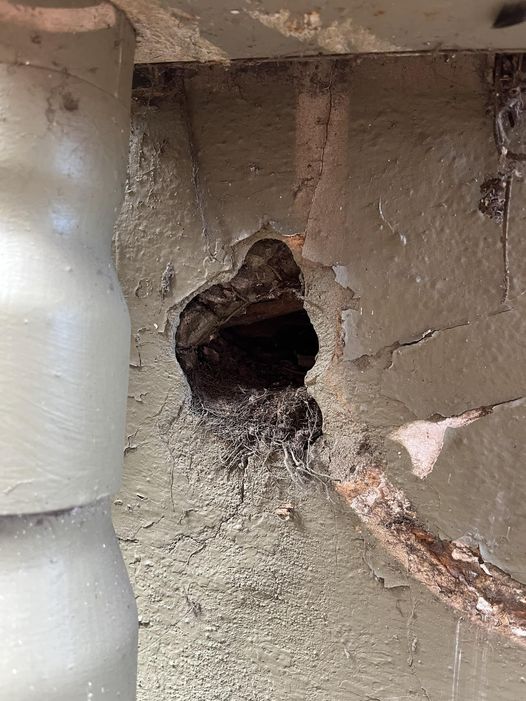How can I effectively cover a hole in my 100-year-old home’s stucco wall to prevent rodents and critters from entering, considering the options of expanding foam or mesh plates?
12 months ago
Last Updated: June 28, 2024
Hey team, I recently bought a 100-year-old house that has stucco walls and lath and plaster construction. I noticed a hole underneath the electrical panel that seems to lead to the crawlspace or subfloor area. Any suggestions on how to cover it up to keep rodents and other critters out? I was thinking of using expanding foam, but maybe a mesh plate would work better? I’m leaning towards the foam since I don’t want to mess with screws in the wall, but I’m open to other ideas if you have any!

Fill it with steel wool, cover it with a 1/4″ mesh, and then fill it with spray foam.
Patch up the concrete
Thoroughly clean the area and apply a quick-setting concrete mix. Use steel wool to prevent rodents from entering, as spray foam is easily chewed through.
Have you heard of a spray foam specifically made to keep rodents away? Maybe that could work? 🤷♀️
Perhaps I should try two different types next time, as the ones I used got chewed through easily.
Do you think you’ll need to utilize that hole for passage at a later time? One option is to insert a piece of conduit in it and then seal it.
Hey, that’s a great question! We’re actually looking to upgrade the electrical panel above, but I assume the new conduit will be run along the existing one.
I used to do electrical work, but now I focus on fire alarms. I’ve noticed that many people repair a damaged wall only to have to drill through it again. And when I was younger, I did stucko for six months – it was tough, probably the hardest job I’ve ever done.
Instead of foam, opt for cement.
If it’s for venting the crawlspace, avoid sealing it up. Instead, consider securing a vent cover over it using screws and anchors.
I don’t think this vent is needed since the crawl space already has several vents, .
Mice can ignore foam, try using a concrete patch instead. Consider creating a backer panel and securing a stainless steel cord with a screw to tighten it against the hole while applying the cement patch. For added strength, layer fiberglass mesh between the cement, but remember to wear protective gear. A foam backer board can be used as the backer panel for this method.
Insert chicken wire and concrete patch or mortar into the hole gently
Looking spooky, they are.
Mesh and hydraulic cement mix together.
Stucco patch is what they create.